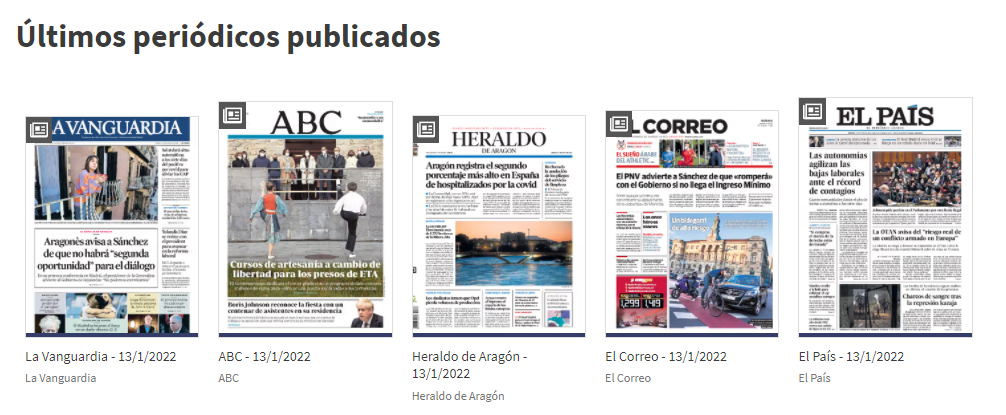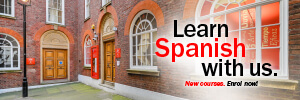Vídeos de la jornada cultural hispano-británica del 3 de febrero
Ya puedes ver en nuestro Youtube los actos de la jornada cultural hispano-británica con ocasión de la visita a Londres el 3 de febrero del director del Instituto Cervantes, Luis García Montero:
1⃣ Ruta del Londres español: Memoria de nuestros exilios
2⃣ García Montero firmó junto a Jimmy Burns Marañón, presidente de la British Spanish Society, un acuerdo marco de colaboración entre el Instituto Cervantes y la centenaria organización hispano-británica:
3⃣ El fondo antiguo de la biblioteca del Instituto Cervantes de Londres, formado por unos 800 ejemplares de libros de viajeros británicos por España y de libros antiguos, fue dedicado a la memoria del célebre hispanista británico Trevor Dadson:
4⃣ La devolución de un manuscrito de finales del S. XVI titulado Abusos de comedias y tragedias a la Biblioteca Nacional de España, gracias a la generosidad del catedrático emérito de UCL Ángel María García Gómez:
5⃣ La presentación en la de la traducción al inglés del libro Wild Creature, del poeta catalán Joan Margarit (1938-2021), que contó con el apoyo económico del Instituto Cervantes de Londres para su traducción:
Easy Reading: Spanish writer Cristina Morales’ first book to be published in the UK

The daring and provocative novel ‘Easy Reading’ about bodies, sex, politics and disability by the prize-winning Spanish writer Cristina Morales and her first to be published in the UK.
Ángela, Patricia, Marga and Nati are cousins living together in Barcelona. As women branded as disabled who share a state-subsidised flat, they must fight every day to retain their independence and find new and inventive ways – from dance to underground zines – to stop the state from managing every aspect of their lives.
Funny and furious, ‘Easy Reading’ is an indictment of the institutions that stigmatise individuals as disabled and of the language that marginalises them. It is also a portrait – visceral, vibrant, combative – of contemporary Barcelona. But, above all, Easy Reading is a feminist celebration of the body in all its forms, of female desire and queer sexuality, and of the transgressive and revolutionary power of language.
Translated from the Spanish by Kevin Gerry Du
Cristina Morales was born in Granada, Spain. She is the author of four novels and a collection of short stories. Easy Reading, her fourth novel, was awarded the Herralde Prize and the Spanish National Book Award, and became an overnight bestseller. In 2021, she was named a Granta Best Young Spanish-Language Novelist. Morales works with the contemporary dance company Iniciativa Sexual Femenina and is executive producer of the punk band At-Asko.
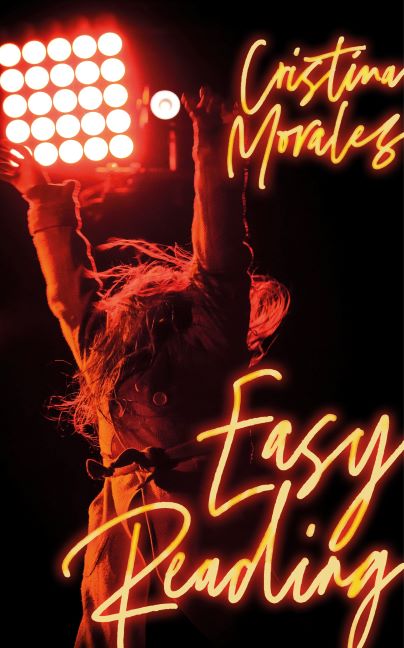
‘Punk rock has arrived in Spanish literature’ El Pais
‘A force of nature’ ABC
‘Offensive, playful, transgressive, hilarious, visceral, combative, brutal, and yet somehow tender… A book that shook me to my core’ Esquire
‘The most brutal, provocative and hilarious voice in contemporary Spanish literature. Like an unexpected meeting between Kathy Acker and Camilo José Cela in a gynaecologist’s waiting room. Extraordinary’ Paul B. Preciado
Winner of Spain’s National Book Award
EASY READING, by Cristina Morales
Published 24 March 2022
by Jonathan Cape, part of Vintage | £14.99 | TPB | 9781787332676
Translator Anna Crowe on Margarit’s poetry

Translator Anna Crowe is the co-founder of StAnza, Scotland’s Poetry Festival, her translations of the late Catalan poet, Joan Margarit, brought her a Society of Authors Travelling Scholarship in 2005. Margarit’s two final collections were published in November 2021 by Bloodaxe Books as Wild Creature. Bloodaxe have published three previous collections of his work, Tugs in the fog (awarded a Recommendation for translation in 2006 by the Poetry Book Society), Strangely Happy and Love is a Place. She has translated several books for Arc Publications: an anthology of Catalan poetry (Six Catalan Poets, Arc, 2013); a collection by the Mexican poet, Pedro Serrano (Peatlands, Arc Publications 2014); a collection of work by the Mallorcan poet Josep-Lluís Aguiló, (Lunarium, 2016); and a collection by the Catalan poet Manuel Forcano (Maps of Desire, Arc 2019), awarded a PBS Recommendation.
Crowe is the co-founder of StAnza, Scotland’s International Poetry Festival and served as Artistic Director for the first seven years, from 1998 – 2005, and subsequently on the Board of Trustees. Her poetry has been translated and anthologised, and recorded for the Poetry Archive. Figure in a Landscape was written in memory of her sister, and in collaboration with the Mallorcan artist, Andreu Maimó. It was published by Mariscat Press, and in a bilingual illustrated edition by Ensiola in Mallorca, and received the Calum MacDonald Award and was a Poetry Book Society Choice; her third full collection is Not on the Side of the Gods (Arc, 2019) and was described the poet, Stewart Conn, as offering ‘an illuminating insight into the marvels of an uncanny links between the natural world and its creatures, and the shifts of light and shade in our own lives’. She is at present working on another collaborative book with Andreu Maimó, to be called Words on the Wind/Paraules al Vent, to be published by Ensiola. She was born in Plymouth, went to school in Marseille and Sussex, and read French and Spanish at the University of St Andrews, where she lives with her husband, Dr Julian Crowe. They have three children and five grandchildren.
- How would you describe Margarit poetry?
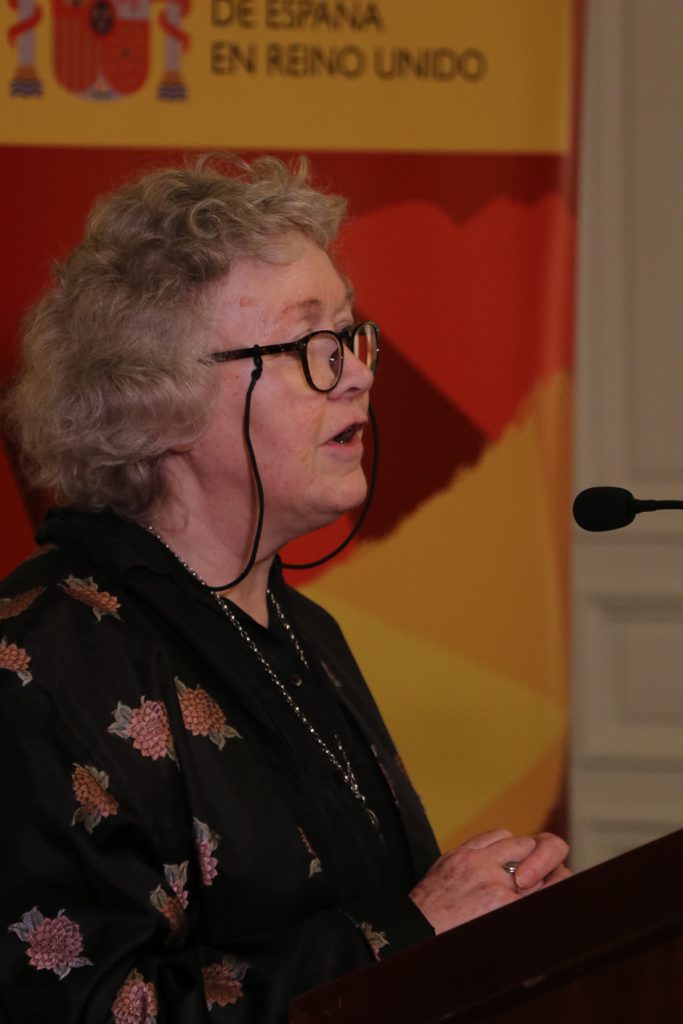
I would describe JM’s poetry as unflinchingly honest. Grief and loss are confronted courageously. He himself described his poetry to me as ‘harsh, rough, even hard’, but there is always a warmth and humanity running through it. He had no time for mystification, especially the religious kind. As he says in ‘Reasons and ways’, ‘I value what’s real: iron when it was being forged/into a nail or a plough, any feeling that I/can recognise in a clean and clear shape.’
His poetry reveals a great love and understanding of music and art, of Schubert, JS Bach, Mozart, Beethoven, Shostakovich, the French chansonniers such as Jacques Brel, Léo Ferré, Geurges Brassens, and all the great jazz musicians.
Van Gogh’s work he loved: ‘Painter of firmaments, clogs, beds, chairs/and fields of wheat that crows fly over.’ Brueghel and Hokusai, Lucian Freud, Francis Bacon, Paula Rego – all painters who paint the everyday, the disturbing, dirty, seamy side of life – these he admired. And the same goes for other poets, such as Philip Larkin, Carles Riba, Josep Carner, Baudelaire, Verlaine, Juan Ramón Jiménez, Elizabeth Bishop, RS Thomas and his beloved Thomas Hardy. Homer, above all. The Iliad is always just below the surface of Margarit’s poems, and his poetry embraces the human experience in all its plurality, strangeness and tragedy.
2. Could you tell us more about the translation process?
Listening to the sounds, the music, of a poem comes first and is of supreme importance. I carry a poem around in my head, living inside it. The translation must reflect the tone of voice, the mood of the original. I check all unfamiliar words to see if there are unsuspected nuances to be aware of. Then I think the poem through in English. The translator, to my way of thinking, should not stand in the way of the poem, or insert his or her own experience into their version. For Margarit’s poetry it has to be clear, straightforward, unpretentious English but should convey something of the rhythms and sounds, wherever possible, of the Catalan. These two languages have a certain affinity, since Catalan, like English, is a consonantal language and has a lot of monosyllabic words and words with masculine endings, so it is not too hard to find equivalent sonic patterns and rhythms. Joan told me, some years ago, ‘I discovered quite early that we sing from the same music, and from that moment on, I ceased to worry.’ He sent me his poems by email and I sent my translations back, and goodness knows how many hundreds, probably several thousands, of emails flew back and forth! He always sent me the Proa editions as soon as they were published, always with affectionate dedications. He would also send the Castilian versions, as he knew my Castilian had been learned before the Catalan and my spoken Castilian was far more fluent than my Catalan, so this was sometimes helpful in decoding an obscure word.
3. What were the biggest challenges during the translation?
The biggest challenge, especially at the beginning, was to make sure the tone was right, and the tone was often brusque and hard. As I have said elsewhere, with poetry like Margarit’s the translator has nowhere to hide. I often felt exposed and that the poetry was almost painfully bare, but the harsher and barer it was, the closer it seemed to get to the bones and the truth of the poem. Another, more amusing, challenge was persuading Joan, from time to time, of the rightness of my choice of English words or expressions unfamiliar to him. He would try to suggest something that would have been absurd or give an unsuitable nuance to the writing. Instead of using a decent dictionary, he would produce from his pocket a little electronic gadget which was a sort of dictionary, but which gave almost no clue as to context, so the suggestions were sometimes hilarious!
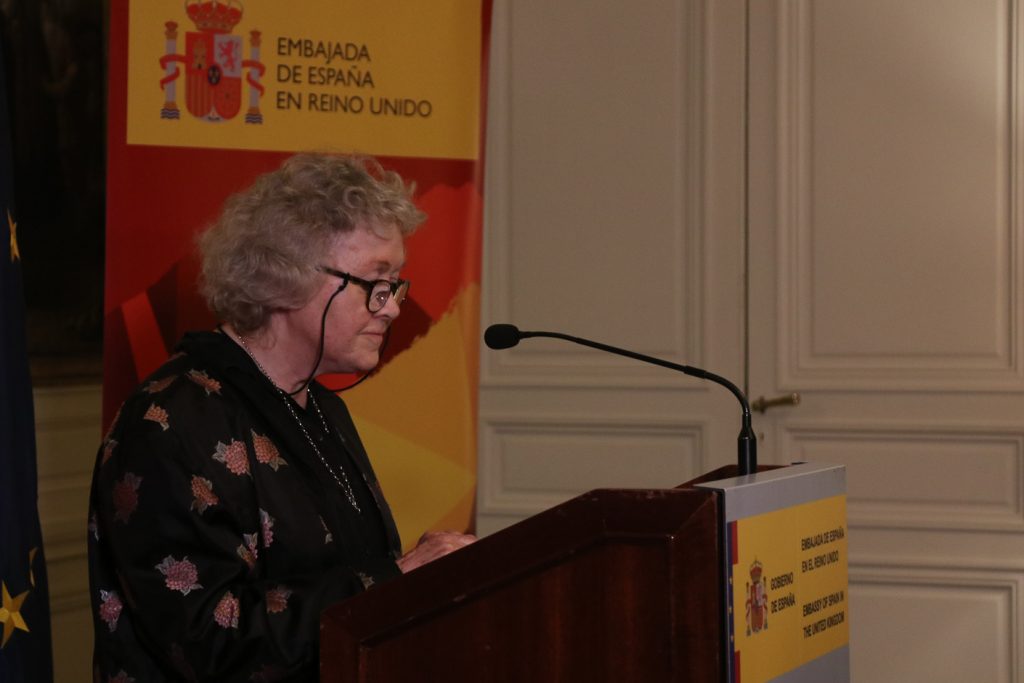
4. Is there any special poem that you would like to mention?
One of Margarit’s poems I love best is from Tugs in the fog, and that is ‘Goodbye to Uncle Lluís’, the uncle who died at the Teruel front in the Spanish Civil War, leaving among his few possessions a cassette player that had in it a recording of the song of a nightingale. There is something of the First World War poet, Edward Thomas, another bird-lover, in this poem whose last two lines are
He will never go back to the river
to record the night birds singing.
But from Wild Creature it would have to be ‘In the early morning’. I find this a very moving poem: the poet and his wife are awake and reading, but the poet turns off his light and lies down. He knows the time left to him is now short:
… I know that where I am gazing
we will end up going with bare feet:
these feet of ours that have searched for each other
beneath the sheets for such a long time …
This is an intimate, tender, domestic image, but it does double duty, since it also carries the knowledge of his approaching death, and the poem continues, linking their reading in bed to the ‘headlights on the deux chevaux’, the little car that used to take them long ago
… along tiny roads
in a world without motorways, where we had to
stop for the night when going to Paris.
The poem succeeds in being a love poem and a poem that faces up to death, as well as a poem celebrating memory and the freedom of going to Paris in the dark days of the Francoist dictatorship. We might call it a ‘bobbed sonnet’ since it is a love poem with a volta between lines 8 and 9, but has 13 not 14 lines, something that to me suggests the poet’s approaching death, the cutting short of a life. Here is the poem in full:
IN THE EARLY MORNING
I have turned off my light and lain down.
You go on reading beside me.
What I’m doing is turning my back on the world,
but I know that where I am gazing
we will end up going with bare feet:
these feet of ours that have searched for each other
beneath the sheets for such a long time.
There is no gesture as warm as this.
You and I, reading in bed early in the morning,
we’re like the headlights on the deux chevaux
that used to carry us along tiny roads
in a world without motorways, where we had to
stop for the night when going to Paris.
5. Could you tell us your opinion of the breadth of Margarit’s readership in the United Kingdom?
I believe that Joan Margarit has been widely read by the poetry-reading public in the UK ever since the publication of Tugs in the fog in 2006, and Bloodaxe have of course published three more books (themselves containing two or three of his collections) since then, so sales must have been good! I know that he is greatly admired by poets of the calibre of Kerry Hardie, Paul Durcan, and Moya Cannon in Ireland, by Menna Elfyn, Professor Emerita of Poetry at the University of Wales Trinity St David, and in Scotland by the first Edinburgh Makar, Stewart Conn, and Vicki Feaver, former Professor of Creative Writing at the University of Chichester. Joan and I have read together at many poetry festivals, including here at StAnza (twice), the South Bank Festival (London), at Newcastle University, and at four separate festivals down the years in the Republic of Ireland, namely Dún Laoghaire (attended by Seamus Heaney and Derek Mahon!), Galway, Limerick, and Cork.
Rutas del Londres español: memoria de nuestros exilios (I)
El jueves, 3 de febrero, presentaremos las Rutas del Londres español: memoria de nuestros exilios (I).
En el mes de marzo inauguraremos un microsite específico con distintos itinerarios por el Londres español y abriremos las inscripciones. Quien tenga interés en hacer la ruta específica del folleto con un grupo, puede escribir a biblon@cervantes.es
Os compartimos, además, el folleto que hemos preparado para la ocasión.
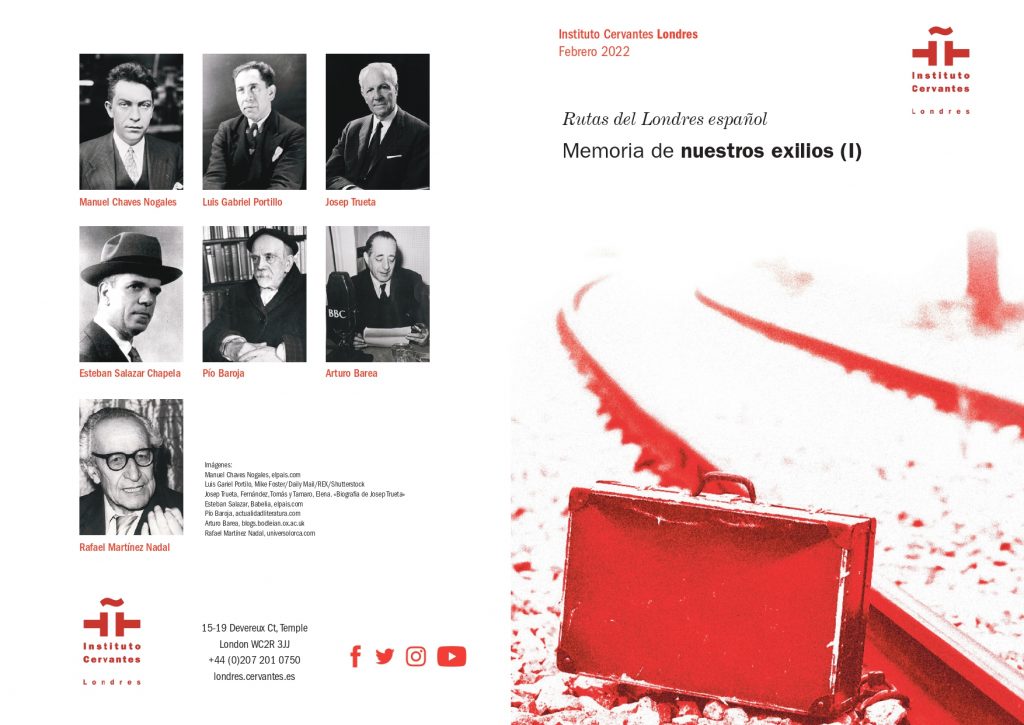

El teatro como invento de Satanás: regresa a la Biblioteca Nacional un manuscrito del siglo XVI encontrado en el Reino Unido
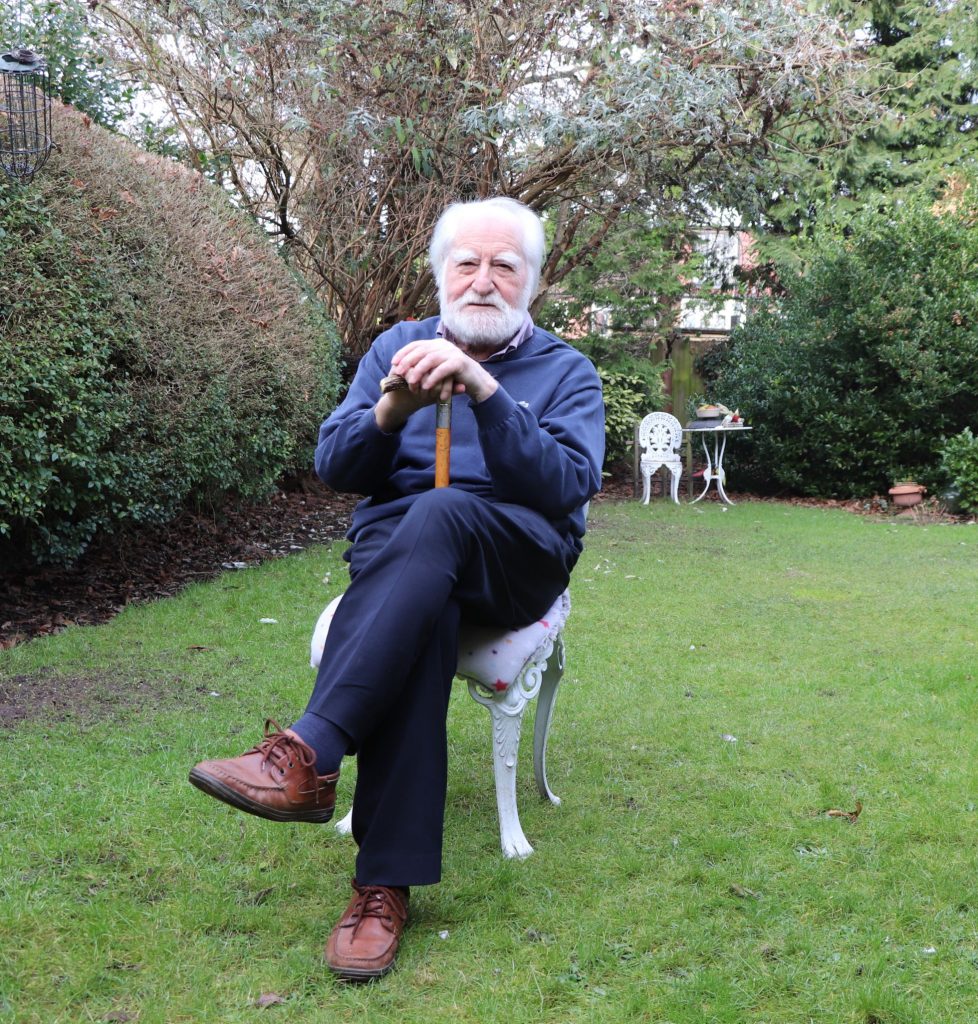
Hace casi medio siglo, alguien que probablemente fuera un clérigo tenía una obsesión casi perversa con la moda del teatro en España, “peste espiritual para las ánimas”, y se dispuso a escribir un tratado completo que aclarara qué debía representarse, quién podía hacerlo, dónde y a qué hora. Abusos de Comedias y Tragedias desapareció misteriosamente de los anaqueles de la Biblioteca Nacional a finales del siglo XIX, en una época en la que el expolio cultural se producía de un modo descontrolado. Solo una tarea digna de Sherlock Holmes pudo rescatar del olvido fragmentos que ayudan a entender mejor la historia de un país. En este caso, el detective se llamaba Angel María García Gómez, catedrático emérito de Estudios Hispánicos y Latinoamericanos del University College London. Cordobés, de 90 años, ha pasado la mitad de su vida en el Reino Unido. Su obra académica es prolija. Ya en 1988 recibió la distinción de Caballero Comendador de la Orden de Isabel la Católica, por su contribución al desarrollo de los estudios hispánicos.
Leer más en El País
La BNE recupera un valioso manuscrito del siglo XVI que proponía desterrar a las mujeres del teatro

Esta es la historia de un manuscrito del siglo XVI que desapareció de la Biblioteca Nacional de España (BNE) hace más de ciento cincuenta años y que ahora vuelve a casa por azar o, mejor aún, por serendipia. Solo así puede entenderse que se esfumara de Madrid sin dejar rastro y apareciera en los ochenta en un anticuario de Little Somerford (Wiltshire, Reino Unido) ante los avezados ojos de Ángel María García Gómez, catedrático emérito de la Universidad de Londres. Este profesor de literatura lo compró y lo investigó hasta darse cuenta de lo que tenía ante sí: probablemente el primer documento, con formato y encuadre de tratado, que discutió la licitud moral de las representaciones teatrales en nuestro país.
Leer más en ABC
Rutas del Londres español: Memoria de nuestros exilios

Os proponemos un paseo por la memoria del exilio español en el este de Londres para conocer lugares señeros de nuestros exiliados protestantes (S. XVI), liberales (S. XIX) y republicanos (S. XX).
El paseo estará guiado por Milagros Dapena-Collopy, guía acreditada “blue badge” en Londres desde 1997 y licenciada en turismo, que glosará cada uno de los lugares por los que pasemos en relación con las personalidades españolas exiliadas.
Esta ruta se circunscribe al este de Londres. El itinerario será el siguiente:
Bloomsbury
Comenzamos nuestro paseo en Bloomsbury, el gran distrito intelectual de Londres. Russell Square Station, London WC1N 1HX
El apartamento del escritor y periodista Manuel Chaves Nogales fue lugar de encuentro de otros exiliados españoles, periodistas, escritores, y políticos republicanos. En el mismo bloque vivió el escritor, poeta y académico Luis Gabriel Portillo. Russell Court – Woburn Place, London WC1H ONL

El antiguo hotel Lincoln’s hall, donde se alojó cuando llego a Inglaterra Josep Trueta, uno de los cirujanos militares más destacados del siglo XX. Reconocido internacionalmente por sus trabajos y aportación a la medicina. Royal National hotel, 38-51 Bedford Way. London WC1H ODG
El Museo Británico. En su biblioteca, Esteban Salazar Chapel tuvo la idea de escribir la crónica del exilio republicano en Gran Bretaña: su Perico en Londres. British Museum – Great Russell Street, London WC1B 3DG
En Bloomsbury Square se alojó un entusiasta de la literatura inglesa, Pío Baroja. Su novela La ciudad de la niebla es un ejemplo de anglofilia barojiana. Bloomsbury Square – London WC1
Holborn / Aldwych
Seguimos nuestro paseo atravesando parte del barrio jurídico de Holborn para llegar a Aldwych, donde se fundó el servicio mundial de la BBC en Bush House. Allí colaboraron varios de los exiliados españoles, destacando Arturo Barea. Bush House – 30 Aldwych, London WC2B 4BG
En King’s College trabajaron algunos de nuestros exiliados en el departamento de español. Rafael Martínez Nadal lo hizo durante cuarenta años. King’s College – Strand, London WC2R 2LS
City of London
En Fleet Street, la calle más emblemática para el mundo periodístico, tuvo su agencia de noticias Manuel Chaves Nogales. 76, Fleet Street, antigua agencia de noticias Atlantic Pacific Express, London EC4Y 1EU
Previamente, en sus talleres, se habían impreso trabajos de reformistas españoles del siglo XVI como Casiodoro de Reina, traductor de la influyente Biblia del Oso.
Terminamos nuestro paseo en un mundo aparte: el escondido barrio de Temple. En su iglesia, de origen templario, Antonio del Corro, otro de los reformadores del siglo XVI y autor de una gramática española para ingleses, fue el primer Reader. Temple Church – Temple , London EC4Y 7BB
Regístrate en nuestro evento de Eventbrite.
El Instituto Cervantes organiza una jornada cultural hispano-británica con ocasión de la visita de García Montero a Londres
El Instituto Cervantes de Londres organiza el jueves 3 de febrero una celebración de la literatura española y de los vínculos hispano-británicos que contará con la presencia del director del Instituto Cervantes, Luis García Montero. A lo largo de la jornada se inaugurará una ruta del exilio español en el este de Londres, se dedicará una biblioteca en homenaje al hispanista Trevor Dadson, se entregará un manuscrito –ahora custodiado por el Cervantes de Londres- a la Biblioteca Nacional de España, y se presentará la traducción al inglés del libro Wild creature, del poeta catalán Joan Margarit. La directora de la Biblioteca Nacional de España, Ana Santos, acompañará a García Montero en los actos de este día.
Ruta del exilio español en el este de Londres
El director del Instituto Cervantes participará en la primera ruta del exilio español en el este de Londres, con salida desde la estación de metro de Russell Square, en una comitiva liderada por el embajador de España, José Pascual Marco, y en la que no faltará el nieto del célebre exiliado Manuel Chaves Nogales, Antony Jones.
En el recorrido no faltarán parada expresa ni mención a españoles exiliados en Londres en lugares como: Russell Court (Manuel Chaves Nogales, Gabriel Portillo, Joan Gili), Lincoln’s inn (Josep Trueta), British Museum (Esteban Salazar Chapela), Kingsway (Pablo de Azcárate), LSE (Josep María Batista Roca), Bush House (Arturo Barea), Fleet Street (Casiodoro de Reina, Cipriano Valera) y Temple (Antonio del Corro).
Este paseo es la primera de una serie de rutas con guías cualificados que el Instituto Cervantes de Londres va a incluir en su programación para dar a conocer el legado de los españoles que vivieron y trabajaron en la capital británica.
Acuerdo de colaboración con la British-Spanish Society

García Montero firmará junto a Jimmy Burns Marañón, presidente de la British Spanish Society (BSS, por sus siglas en inglés) un acuerdo marco de colaboración entre el Instituto Cervantes y la centenaria organización hispano-británica. El acto tendrá lugar en la biblioteca del Instituto, en Temple.
Las áreas generales de colaboración contempladas en el acuerdo entre Cervantes y BSS son las siguientes: cooperación educativa y académica, estudios técnicos y de consultoría, proyectos de investigación y desarrollo tecnológico e innovación, y cooperación en programas europeos. Con la firma del acuerdo, el Instituto y la BSS afianzan una colaboración que viene de antiguo.
Dedicación del fondo antiguo de la biblioteca a Trevor Dadson
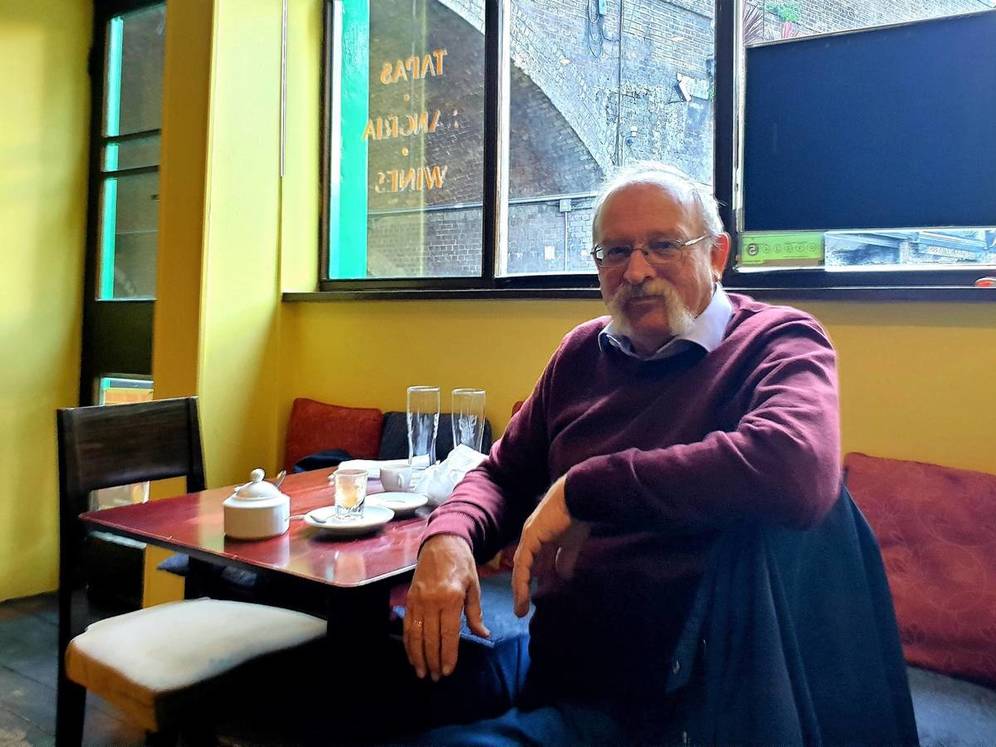
El fondo antiguo de la biblioteca del Instituto Cervantes de Londres, formado por unos 800 ejemplares de libros de viajeros británicos por España y de libros antiguos, será dedicado a la memoria del célebre hispanista y catedrático británico Trevor Dadson (1947-2020). A partir de ahora, este fondo llevará el nombre de Colección Trevor Dadson – Trevor Dadson Collection.
El acto tendrá lugar en el Instituto Cervantes de Londres, con la presencia de su viuda, Ángeles Dadson, así como de la presidenta de la Asociación de Hispanistas de Gran Bretaña e Irlanda (AHGBI), la catedrática Catherine Boyle. El profesor Dadson presidió la AHGBI entre 2011 y 2015.
Dadson fue un académico de currículo extraordinario, un mentor y maestro de generaciones de estudiosos y -ante todo- un enamorado de España y la cultura española. Este historiador de la literatura fue autor de importantes estudios sobre la poesía del Siglo de Oro y los moriscos. Además, Dadson dejó un gran número de discípulos en el mundo académico. Con la dedicación de esta biblioteca de viajeros británicos por España, el Instituto Cervantes quiere homenajear, en la figura de Dadson, a la rica tradición de hispanistas de Reino Unido.
Devolución del manuscrito a la Biblioteca Nacional de España
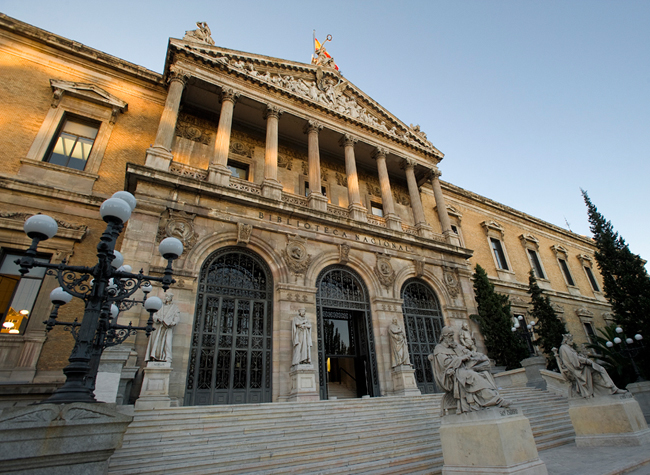
Por la tarde, en la Embajada de España en Reino Unido, tendrá lugar un acto muy especial: la devolución de un manuscrito de finales del S. XVI titulado Abusos de comedias y tragedias a la Biblioteca Nacional. Para la recepción del documento se trasladará a la Embajada la directora de dicha institución, Ana Santos, junto a Luis García Montero.
El manuscrito, que aborda el tema, típico en la época, de la moralidad del teatro, consta de 24 páginas en 12 folios. Se ha probado que el documento formó parte de las colecciones de la Biblioteca Nacional hasta mediados del siglo XIX, momento en el que desapareció de los fondos de la institución. Siglo y medio más tarde, el catedrático emérito de UCL Ángel María García Gómez, lo encontró en una librería anticuaria del condado de Wiltshire y procedió a su compra. Con este acto de entrega a la Biblioteca Nacional se cumple el deseo del profesor García Gómez de que el valioso manuscrito vuelva a la que fue su casa.
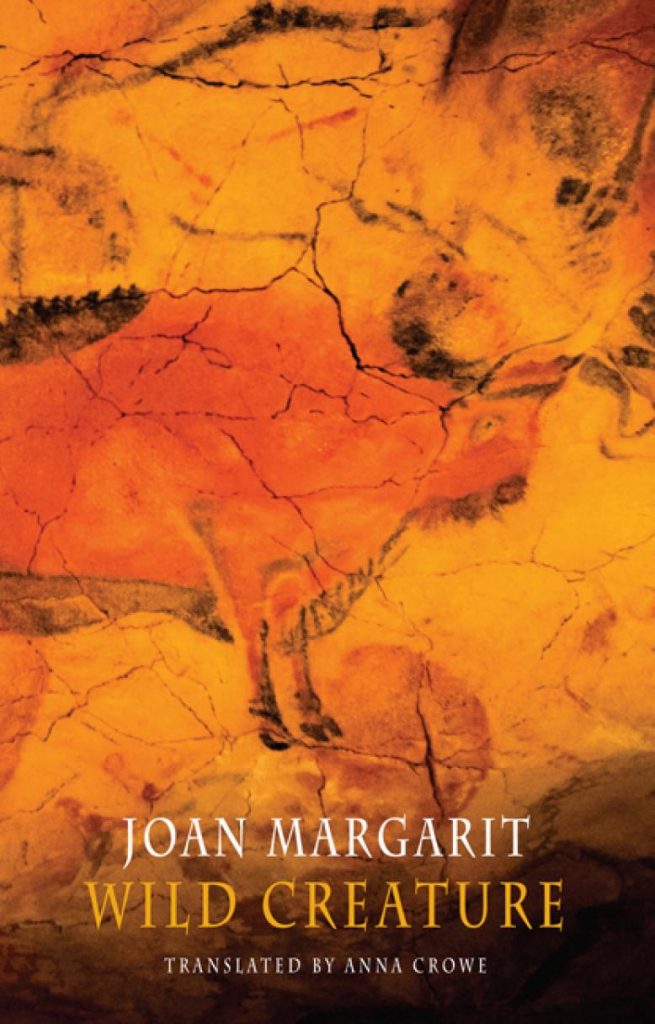
Traducción al inglés de Wild creature, libro de Joan Margarit
La jornada culminará con la presentación, en la misma Embajada y acto seguido, de la traducción al inglés del libro Wild Creature (Animal de Bosc), del poeta catalán Joan Margarit (1938-2021), que contó con el apoyo económico del Instituto Cervantes de Londres para su traducción.
Wild Creature, publicado por Bloodaxe Books en Reino Unido, ha sido traducido del catalán al inglés por Anna Crowe, quien participará en el acto, junto al editor, Neil Astley, y el nieto de Margarit, Eduard Lezcano. La presentación se cerrará con un recital de poemas de Margarit en catalán e inglés, a cargo de Marc Bosch y Alex Mugnaioni, respectivamente.
Margarit, nacido en Sanahuja, Lleida, obtuvo el Premio Cervantes en 2019 por “su obra poética de honda transcendencia y lúcido lenguaje siempre innovador”, con el que “ha enriquecido tanto la lengua española como la lengua catalana, y ha representado la pluralidad de la cultura peninsular en una dimensión universal de gran maestría”.
Con los actos previstos para el día 3 se quiere, en opinión del director del Instituto Cervantes en Londres, Ignacio Peyró, “honrar la memoria española de la ciudad, dar a conocer la diversidad de nuestra poesía, celebrar el hispanismo británico y subrayar la fuerza de los lazos culturales entre Gran Bretaña y España”.
Parallel Mothers premieres in the UK on January 28th

Parallel Mothers, the latest movie directed and written by Pedro Almodóvar, premieres in UK’s cinemas on January 28th. The Spanish director reunites with his muse Penelope Cruz for this moving, intriguing drama.
Two women, Janis and Ana, meet in a hospital where they are about to give birth. Both are single and became pregnant by accident. Janis, middle-aged, has no regrets and is exultant. The other, Ana, an adolescent, is scared and repentant. Janis tries to encourage her as they move like sleepwalkers through the hospital corridors. The few words they exchange in these hours will create a very close link between them, which by chance will develop and complicate, changing their lives in a decisive way.
Revistas y periódicos en nuestra plataforma de libros electrónicos
Ahora puedes leer revistas y periódicos electrónicos a través de Internet. Accede al catálogo y toma en préstamo una selección de revistas (Claves de la Razón Práctica, Caimán, Punto y Coma o Descubrir el Arte) y a algunos de los más importantes periódicos de España (El País, La Vanguardia o ABC) en formato digital, para poderlas leer en diferentes dispositivos: tabletas, teléfonos inteligentes, ordenadores personales o lectores de libros electrónicos.
Revistas: el periodo de préstamo es de 2 días / Periódicos: el periodo de préstamo es de 2 horas

New in our e-book platform!
Now you can read electronic magazines and newspapers over the Internet. Access the catalogue and borrow a selection of magazines and some of the most important Spanish newspapers in digital format. You can read them on different devices: tablets, smartphones, personal computers or electronic book readers.
Magazines: the loan period is 2 days / Newspapers: the loan period is 2 hours
